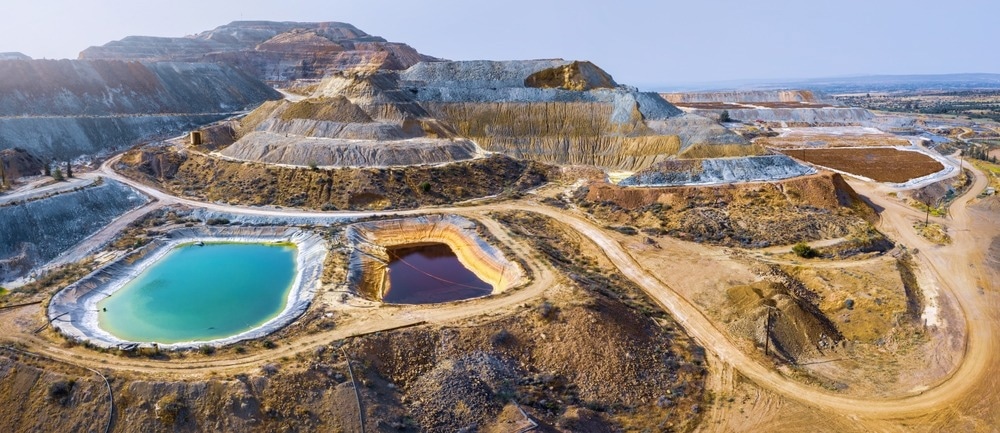An advanced radar-machine learning model could help prevent infrastructure damage and environmental harm by predicting when and where the ground will sink in mining regions.

Image Credit: Anna Kucherova/Shutterstock.com
Researchers introduced an innovative approach for predicting surface subsidence in mining areas by integrating Small Baseline Subset Interferometric Synthetic Aperture Radar (SBAS-InSAR) with a composite model combining Seasonal-Trend decomposition and extreme gradient boosting (XGBoost), referred to as STL-XGBoost.
Their study, published in Scientific Reports, addresses the pressing issue of ground subsidence caused by mineral extraction, which poses significant risks to infrastructure, the environment, and human safety.
Transforming Subsidence Monitoring with InSAR Technology
Surface subsidence is a significant concern in mining regions, where mineral extraction frequently causes ground deformation that threatens infrastructure and ecosystems. Traditional monitoring methods, such as leveling and Global Navigation Satellite System (GNSS), offer high precision but are costly and have limited coverage. In contrast, InSAR has transformed subsidence monitoring by providing high-resolution, all-weather data across large areas.
Among InSAR techniques, SBAS-InSAR is particularly effective for analyzing time-series data from multiple radar images to detect long-term ground movement.
At the same time, machine learning (ML) algorithms, such as Extreme Gradient Boosting (XGBoost), have demonstrated strong potential for modeling complex, non-linear patterns in such data. When combined with Seasonal-Trend decomposition (STL), XGBoost can distinguish underlying trends from noise, resulting in more accurate subsidence predictions.
Methodology: Integrating SBAS-InSAR and STL-XGBoost
The study focused on the Pingxiang mining area in Jiangxi Province, China, which has experienced severe ground subsidence due to extensive coal mining. Researchers utilized SBAS-InSAR technology to process 119 ascending Sentinel-1 SAR images acquired between August 2020 and July 2024, extracting surface deformation data using the Sentinel Application Platform (SNAP) and the Stanford Method for Persistent Scatterers (StaMPS).
The STL-XGBoost model was developed to improve prediction accuracy by integrating Seasonal-Trend decomposition based on Loess (STL) with the XGBoost algorithm. The STL method separates time-series data into trend, seasonal, and residual components. This differentiation allows clearer identification of subsidence patterns.
The non-trend components were then modeled using XGBoost, which captures complex, nonlinear relationships between data. This integration enhances the accuracy and stability of predictions, providing a robust framework for monitoring deformation in mining regions.
Results: Enhanced Predictive Performance
The outcomes showed that the STL-XGBoost model achieved superior predictive performance across all five mining sites. Compared to the standalone XGBoost model, it reduced the Mean Absolute Error (MAE) by 31% and the Root Mean Squared Error (RMSE) by 38%, demonstrating its robustness in modeling complex deformation trends.
The model effectively captured nonlinear subsidence behavior at the Anyuan Coal Mine, with a maximum subsidence rate of -63 mm/year. Subsidence varied considerably across the Pingxiang mining region, with the Juyuan Coal Mine exhibiting subsidence deformation rates ranging from -47.6 to -19.7 mm/year.
The seasonal component extracted through STL analysis demonstrated fluctuations correlated with rainfall patterns and mining intensity, with peak-to-peak variations of up to 33.5 mm. The model’s predictions also showed excellent agreement with observed values, evidenced by Pearson correlation coefficients exceeding 0.9. These findings highlight the STL-XGBoost model’s accuracy and potential for real-world surface subsidence monitoring and risk management applications.
Applications for Mining Engineering and Environmental Management
This research has significant implications for mining engineering and environmental management. By providing a reliable framework for predicting surface subsidence, the STL-XGBoost model enables informed planning and operational decisions, enhancing safety and minimizing environmental damage caused by mining activities.
Accurate subsidence forecasts can guide the design and placement of infrastructure, such as roads and pipelines, ensuring resilience against potential ground movement. Integrating SBAS-InSAR with advanced ML expands opportunities for real-time monitoring and risk assessment in mining operations. This proactive approach enables early intervention, thereby reducing hazards to human safety and the surrounding ecosystems. The model’s adaptability makes it applicable to diverse mining conditions, offering a valuable tool for geotechnical engineers and environmental scientists promoting sustainable mining practices.
Conclusion and Future Directions
This study represents a significant advancement in predicting mining-induced subsidence. The composite STL-XGBoost model enhances forecast accuracy while offering insights into the complex dynamics of ground deformation. As global mining activity expands, reliable monitoring and predictive tools are increasingly essential for ensuring safety and sustainability.
Future work should explore other mining regions and integrate the model with additional remote sensing technologies to enhance performance. Attention should also focus on improving the model’s robustness, particularly in handling non-stationary time series data and optimizing hyperparameters for greater predictive accuracy.
This research advances the understanding of subsidence phenomena and provides a practical framework for mining professionals seeking proactive, technology-driven approaches to risk management and environmental protection.
Journal Reference
Guo, J., Li, C. (2025). A mining-area surface-subsidence prediction method based on SBAS-InSAR and STL-XGBoost. Sci Rep 15, 38034. DOI: 10.1038/s41598-025-21818-5, https://www.nature.com/articles/s41598-025-21818-5
Disclaimer: The views expressed here are those of the author expressed in their private capacity and do not necessarily represent the views of AZoM.com Limited T/A AZoNetwork the owner and operator of this website. This disclaimer forms part of the Terms and conditions of use of this website.